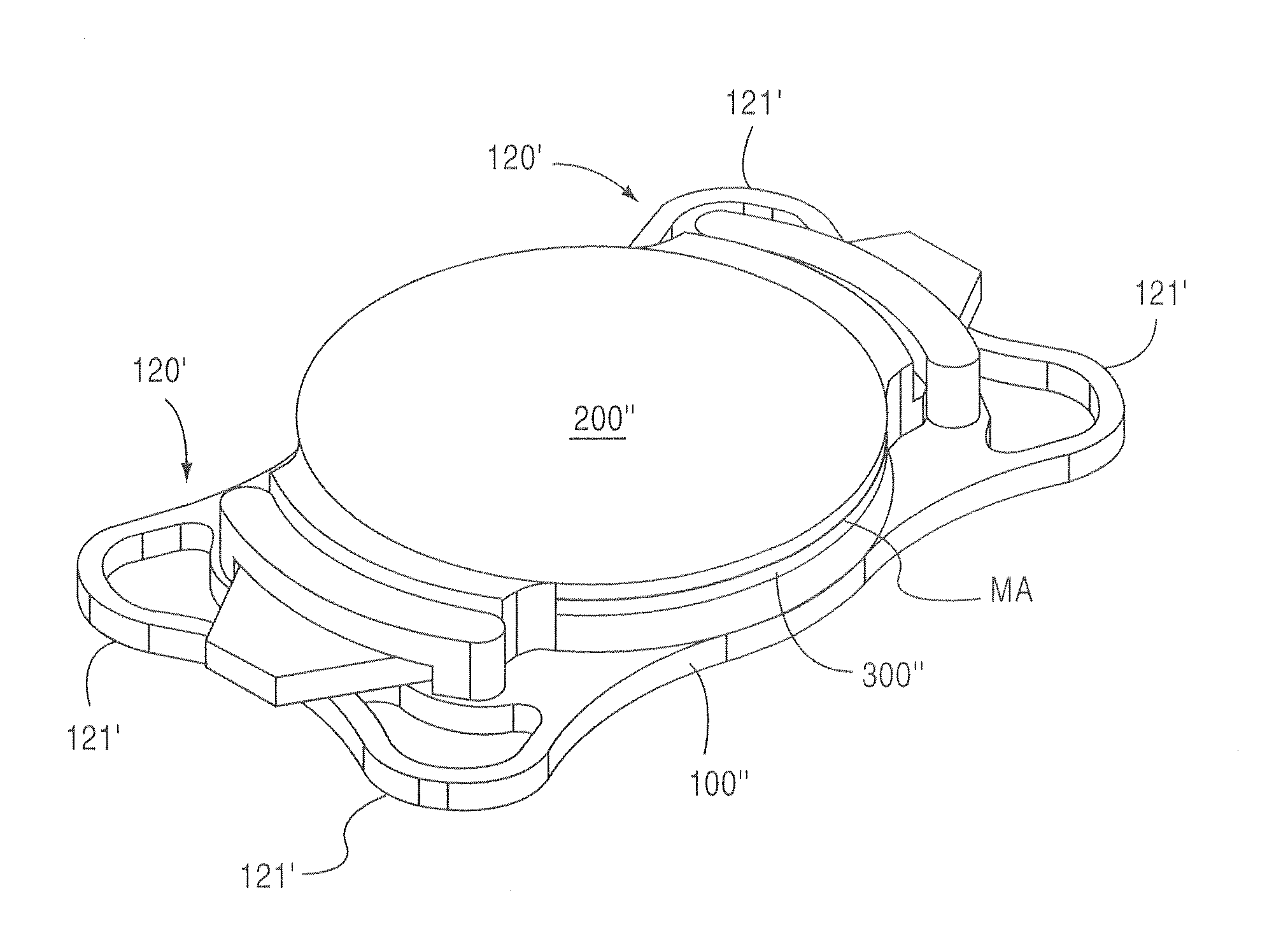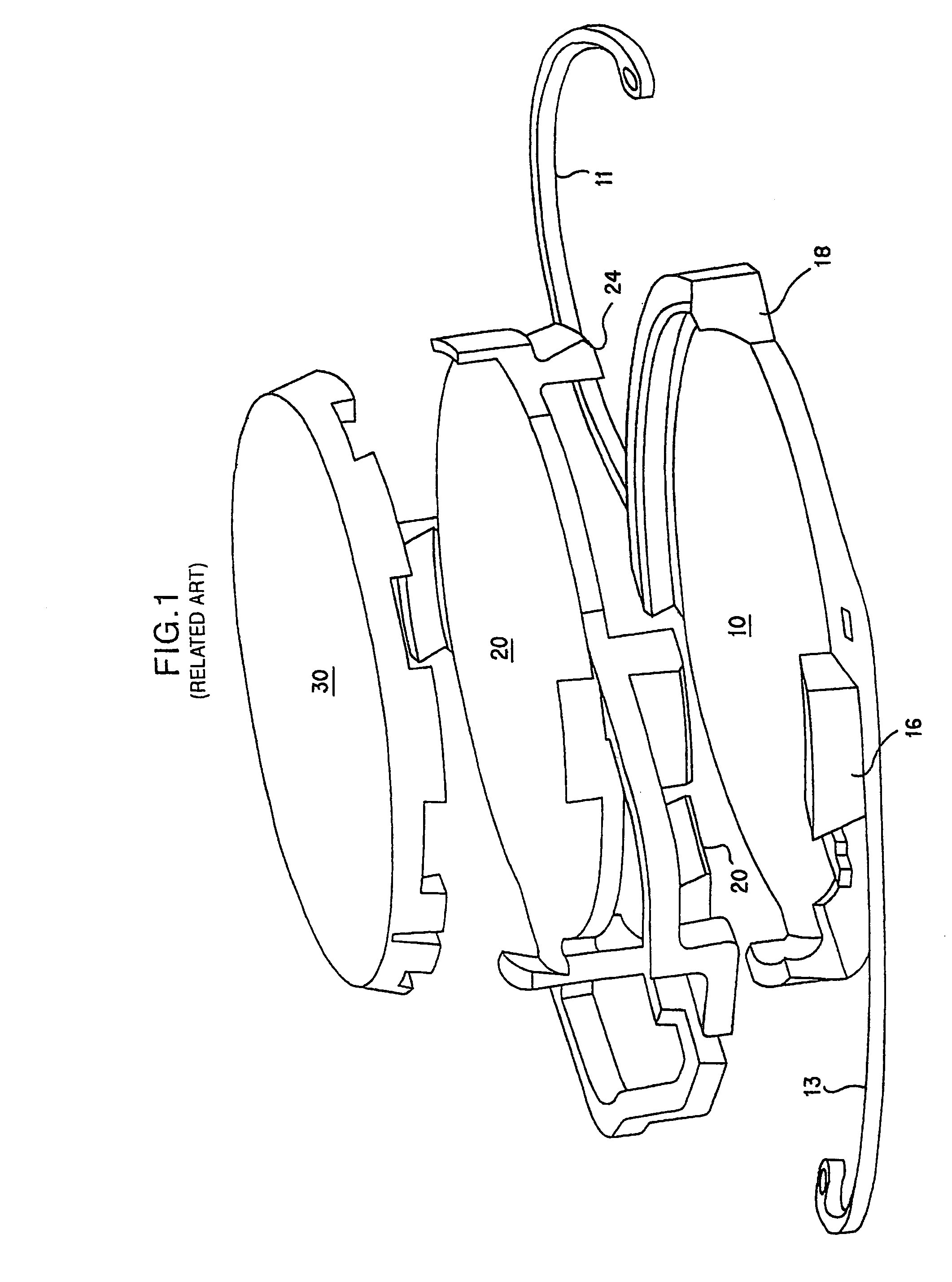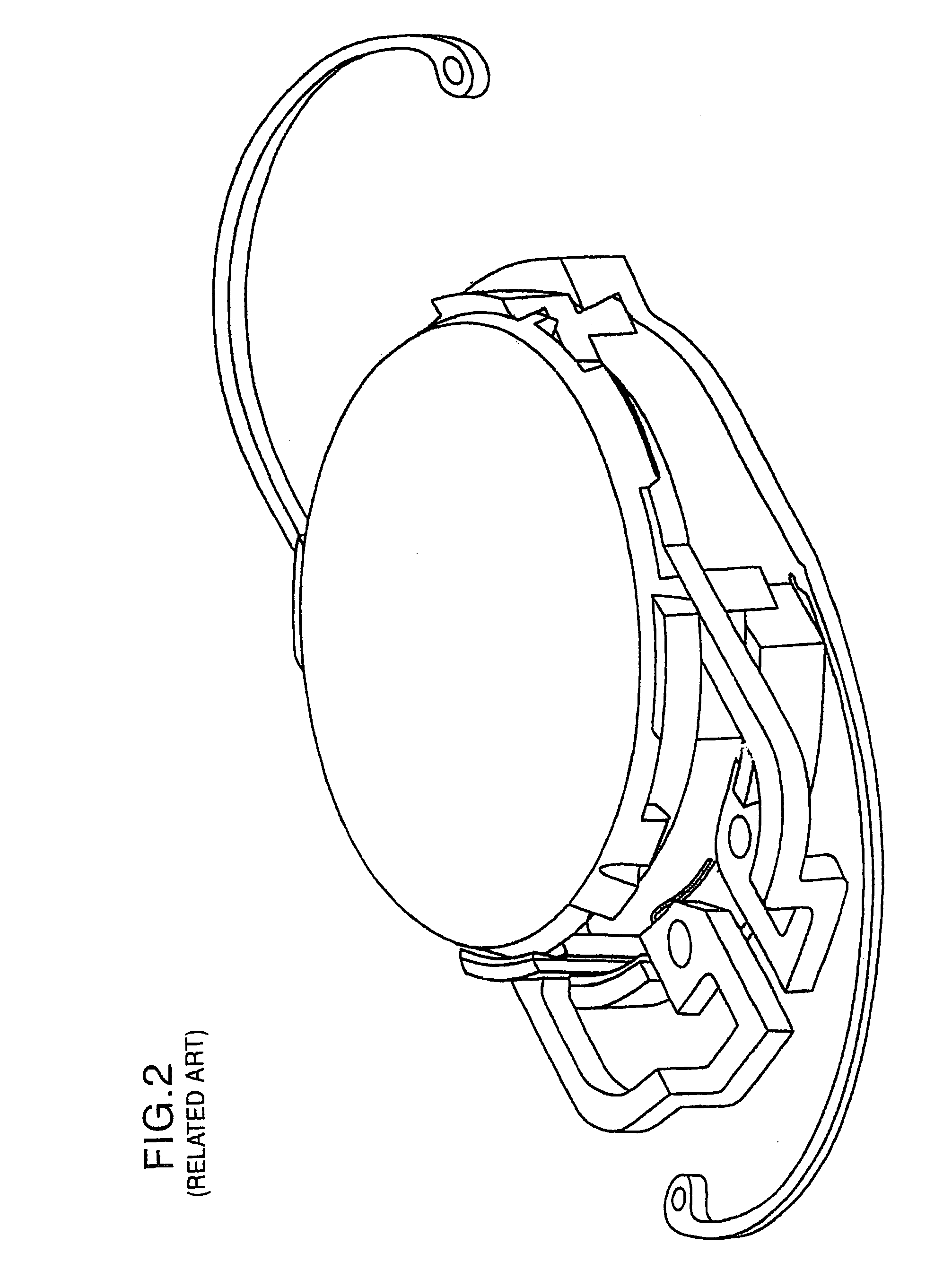Intraocular lens system
a lens system and intraocular technology, applied in intraocular lenses, medical science, prosthesis, etc., can solve the problems of corneal refractive surgery, lack of post-operative refractive accuracy, and current procedures and methods used by refractive surgeons may not meet the total refractive needs of patients,
- Summary
- Abstract
- Description
- Claims
- Application Information
AI Technical Summary
Benefits of technology
Problems solved by technology
Method used
Image
Examples
Embodiment Construction
[0073]It should be noted that according to the preferred embodiments of the present invention, the fully assembled or end appearance of the base lens 100′ of the present invention compared to the base lens 100 described above and illustrated in FIGS. 12A, 12B and 13 is substantially similar to the base lens 100 disclosed in the '875 application. Therefore, a detailed description of many of the common features of the base lens 100′ with the base lens 100 is omitted herefrom in order to avoid redundancy.
[0074]However, it should be noted that the base lens 100′ of the present invention differs from the above-described base lens 100 in that the base lens 100′ is initially manufactured to be in three components that are to be assembled together and haptics 120′ in the base lens 100′ are configured to be a plate shape haptic 120′ as opposed to the C-loop haptic 120 in the above-described base lens 100. The plate shaped hepatic 120′ (FIG. 24) is configured to have ears 121′, 121′ which are...
PUM
 Login to View More
Login to View More Abstract
Description
Claims
Application Information
 Login to View More
Login to View More - R&D
- Intellectual Property
- Life Sciences
- Materials
- Tech Scout
- Unparalleled Data Quality
- Higher Quality Content
- 60% Fewer Hallucinations
Browse by: Latest US Patents, China's latest patents, Technical Efficacy Thesaurus, Application Domain, Technology Topic, Popular Technical Reports.
© 2025 PatSnap. All rights reserved.Legal|Privacy policy|Modern Slavery Act Transparency Statement|Sitemap|About US| Contact US: help@patsnap.com



